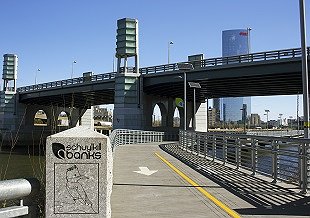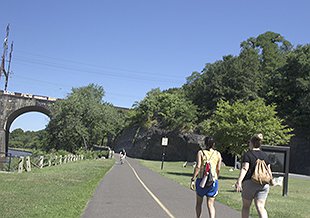Rethinking Transit: SEPTA's Bus System
On October 2, the Philadelphia Media Network hosted a panel discussion on SEPTA's bus system in light of their new improvement plan. SEPTA is competing with ride share options that offer competitive prices, and is also experiencing a general decline in ridership throughout the city. Their response needs to be targeted and strategic. This means focusing on issues that are achievable, like enforcing bus lane and traffic laws that are in place, as well as pushing for faster reliable service over expansion.
Imagine this scenario. You can take uberPool to get from 45th and Chestnut to 18th and Chestnut for $3.00 and know that when you request the car it will get there in 4 minutes. On the other hand, you can wait for the route 21 bus for $2.50 without a SEPTA Key. Those two options are on equal footing, the only difference being the wait time. If the 21 is 10 minutes away, then the option for Uber Pool seems all the more enticing.
That is where the panel discussion began. In light of new challenges and low ridership, how can SEPTA improve its service and reliability not just to regain riders, but also for sustainable growth?
One simple answer brought up by Tabitha Decker, Director of the New York City program at Transit Center which is a philanthropic foundation that supports research, advocacy and leadership development for transit reform across the United States, was faster, more frequent and more reliable service. However, as the conversation dove deeper, it became clear that the challenges facing SEPTA are not one-size fits all.
SEPTA is the 4th largest urban bus service with 118 fixed routes in the city and suburbs. In fact, half of all the SEPTA riders are bus riders. The issues facing those riders are vital in the city.
One main topic of discussion was transfer fees. The first concern is the expense for riders. Dr. Richard Voith, President and Principal of Econsult Solutions, Inc., stated that SEPTA has the highest cost for the worst service. According to him, pushing transfer fees only exasperates this. In addition, transfer fees go against the notion of a connected bus network since riders avoid changing buses or jumping on trains when there is an extra cost involved. The end result is one rider takes one bus throughout the city which adds congestion to the streets and cost to SEPTA.
One possible solution is bringing up a new generation of young riders. Marcus McKnight, a Philadelphia native and transit advocate, highlighted the high cost of kids passes for anyone over 4 years-old. Not only does this cause an obstacle for single parents who cannot afford multiple passes for their family, but it also forces families into cars. McKnight suggested working with schools, and working to lower the cost to get families and children excited about taking the bus to ensure that when they grow up, the behavior may stick.
Regardless of the speaker or point of view, one thing was clear at the discussion, Philadelphians need and care for public transportation. As McKnight highlighted at the very beginning, public transportation is a low-cost alternative to driving, and not supposed to feel like a chore. With the issues that SEPTA is experiencing, sometimes it can be.
A public transit system should be a resource for the residents, a learning tool for a new generation, and an equitable way to improve one’s quality of life. It is imperative that we address these issues, as services like Uber and Lyft will not be the single solutions. It was clear after this meeting that with inclusive discussions like this, SEPTA can achieve this goal..


